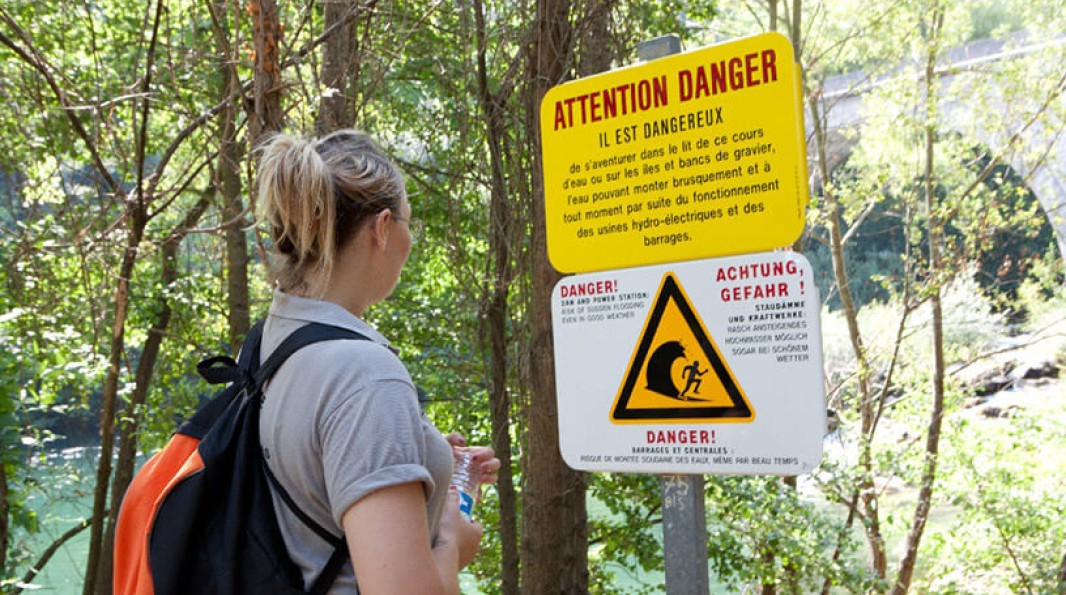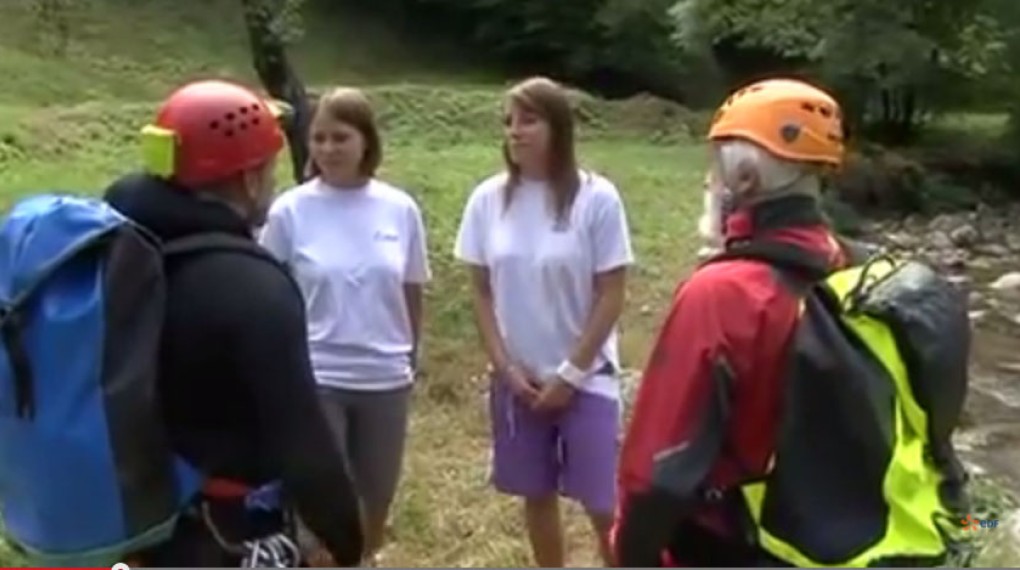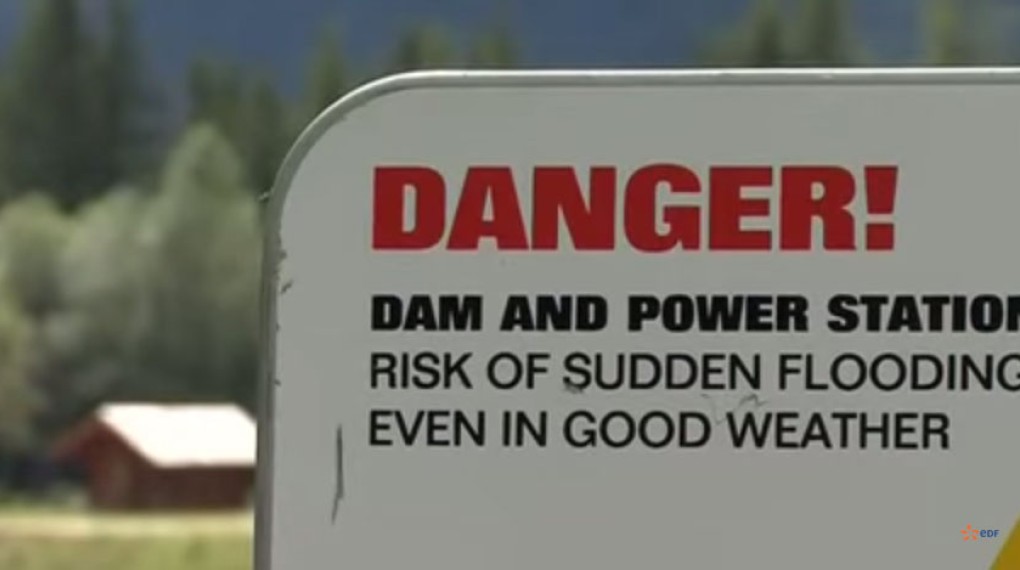Raising public awareness of the risks associated with hydroelectric facilities
Ongoing improvement to the safety of people living near hydroelectric facilities and holidaymakers using their rivers is a top priority for EDF. In addition to clear signs, the “Calme apparent, risque présent” (risk of sudden flooding even in good weather) information campaign draws the public’s attention every year to the risks involved.

Sites signposted, operators who adapt
Hikers, swimmers, anglers, divers and whitewater sports enthusiasts may face several types of hazards near hydroelectric facilities. The most obvious is the release of water to meet electricity demand, which causes the river water level to rise rapidly and sharply increases the strength of the current.
Water releases from the Aigle reservoir in the Corrèze department, which holds 225 million cubic metres of water, can raise the level of the Dordogne River by 4 metres within a few minutes.
The surroundings of rivers and sites may also prove slippery, even when the water is not rising, following operation of a power plant.
To warn people of these hazards, signs are posted around sites with safety instructions:
- More than 10,000 yellow warning signs are in place near the rivers, lakes and canals that supply power plants
- Red beacons mark off areas on reservoirs where boating, fishing and swimming are prohibited
Sites heavily used by holidaymakers adapt their operations during the holiday season:
- Between June and September, the Luzech hydroelectric plant limits production to enable people to go canoeing on the Lot River
At the Serre-Ponçon dam, which impounds Europe’s largest reservoir, EDF provides hourly bulletins for the managing authority on changes in the water level of the lake, which has five public beaches
The annual awareness campaign
Every year EDF conducts a public awareness-raising campaign called "Calme apparent, risque présent" (risk of sudden flooding even in good weather). In 2012, all brochures, flyers and posters were updated to grab the attention of local residents and tourists who might have become desensitised to the previous materials, which had been in use for five years.
“Dams – get the message?” Lectures are organised for primary school children, in which speakers explain how dams work and talk about the risks downstream from hydroelectric facilities.
Some 230,000 brochures are distributed and close to 500 school lectures held every year as part of the “Calme apparent, risque présent" campaign.
Another highlight of the campaign is the recruitment every year of 160 young people to serve as seasonal “hydro guides”. They are in charge of approaching holidaymakers to provide basic safety advice: pay attention to signs and follow instructions, stay on the riverbank, stay away from areas from which they cannot rapidly escape if the water level rises, do not leave children unattended, and so on.
Thanks to the warnings and information they provide, the hydro guides help steadily improve the safety system EDF has introduced near its facilities.

Your browser does not support javascript.
To enable you to access the information, we suggest you view the video in a new tab.

Your browser does not support javascript.
To enable you to access the information, we suggest you view the video in a new tab.

Your browser does not support javascript.
To enable you to access the information, we suggest you view the video in a new tab.
